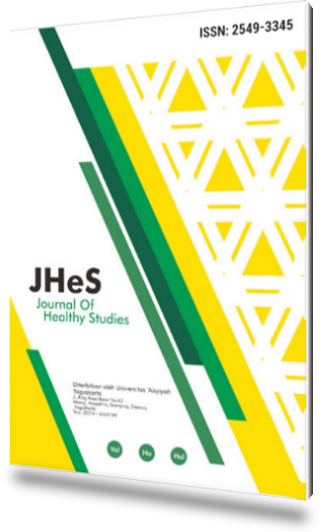Overview of malaria prevention and treatment management in The Gambia: a descriptive study
DOI:
https://doi.org/10.31101/jhes.2959Keywords:
control, malaria, management, prevention, the gambiaAbstract
Downloads
References
Abbas, F., Monroe, A., Kiware, S., Khamis, M., Serbantez, N., Al-Mafazy, AW, ... & Kigadye, E. (2023). Stakeholder perspectives on house-to-house interventions to enhance community engagement in malaria elimination in Zanzibar. Malaria Journal, 22(1), 1-10.
Ashley, E. A., & Poespoprodjo, J. R. (2020). Treatment and prevention of malaria in children. The Lancet Child and Adolescent Health, 4(10), 775-789. https://doi.org/10.1016/S2352-4642(20)30127-9
Battle, K. E., Lucas, T. C. D., Nguyen, M., Howes, R. E., Nandi, A. K., Twohig, K. A., Pfeffer, D. A., Cameron, E., Rao, P. C., Casey, D., Gibson, H. S., Rozier, JA, Dalrymple, U., Keddie, S.H., Collins, E.L., Harris, J.R., Guerra, C.A., Thorn, M.P., Bisanzio, D., ... Gething, P.W. (2019). Mapping global endemicity and clinical burden of Plasmodium vivax, 2000-17: a spatial and temporal modeling study. The Lancet, 394(10195), 332-343. https://doi.org/10.1016/S0140-6736(19)31096-7
CARRASCO-TENEZACA, M. A. R. I. A. (2023). Malaria vector ecology and housing in The Gambia (Doctoral dissertation, Durham University).
Centers for Disease Control and Prevention. Global Health, Division of Parasitic Diseases and Malaria. Malaria Treatment (United States). Available at https://www.cdc.gov/malaria/diagnosis_treatment/index.html. Accessed February 1, 2023.
Cirera, L., Sacoor, C., Meremikwu, M., Ranaivo, L., Ebo, M.M., Arikpo, D., Matavele, O., Rafaralahy, V., Ndombe, D, Duran, C. P., Ramirez, M., Ramponi, F., González, R., Maly, C., Roman, E., Sicuri, E., Pagnoni, F., & Menéndez, C. (2023). The economic cost of malaria in pregnancy: evidence from four sub-Saharan countries [version 1; peer review: pending peer review] Gates Open Research. 1-12.
Forgan RS, Blackburn, AK, Boyle, MM, Schneebeli, ST, & Fraser Stoddart, J. (2014). Topological and chemical implications of introducing oriented rings into [3]catenanes. Supramolecular Chemistry, 26(3-4), 192-201. https://doi.org/10.1080/10610278.2013.844812
Gadji, M., Cobar, G., Thiongane, A., Senghor, AB, Seck, R., Faye, BF, ... & Diop, S. (2023). Red blood cell alloantibodies in pediatric transfusion in sub-Saharan Africa: A new cohort and review of the literature. eJHaem
Idro R, Marsh K, John CC, et al. (2010). Cerebral malaria: mechanisms of brain injury and strategies to improve neurocognitive outcomes. Pediatr Res. 2010;68:267-274.
Jawo, E., Kargbo, A., Mendy, P. A., Mendy, E., & Sanyang, B. (2022). Knowledge, Beliefs and Attitudes towards Malaria Control and Prevention among Students in Higher Education Institutions in The Gambia Study Site. 35(1), 18-30.
Kariuki S, Kamau L. A new generation of long-lasting insecticidal nets. Lancet. 2022;399:1202- 1203
Lalloo, D. G., Shingadia, D., Bell, D. J., Beeching, N. J., Whitty, C. J. M., & Chiodini, P. L. (2016). Guidelines for malaria treatment in England 2016. Journal of Infection, 72(6), 635-649. https://doi.org/10.1016/j.jinf.2016.02.001
Mbye, H., Mane, K., Diop, M.F., Demba, M.A., Bojang, F., Mohammed, N.I., Jeffries, D., Quashie, N. Ben, D'Alessandro, U., & Amambua-Ngwa, A. (2022). Plasmodium falciparum merozoite invasion ligands, associated antimalarial resistance loci and ex vivo responses to antimalarials in The Gambia. The Journal of Antimicrobial Chemotherapy, 77(11), 2946-2955. https://doi.org/10.1093/jac/dkac244
Nascimento-Carvalho, C., Peltola, V., Shah, I., Syrogiannopoulos, G., Chen, K. T., Galli, L., ... & Tebruegge, M. (2023). Malaria in Children: An Update on Management and Prevention
NMCP (2019), National Malaria Control Program, The Gambia, Annual Malaria Intervention Profile and Report in The Gambia: Global Fund, UNICEF, WHO, CRS Project 74.
Olasope, M. A., Ojuromi, O. T., Ajibaye, O., & Ibidapo, C. A. (2023). Tropical Journal of Natural Products Research
Onosakponome, EO Malaria Prevalence in COVID-19 Patients by Blood Group Classification
Paaijmans, K. P., & Huijben, S. (2020). Taking the "I" out of LLINs: Using insecticides on vector control tools in addition to long-lasting bed nets to combat malaria. Malaria Journal, 19(1), 1-6. https://doi.org/10.1186/s12936-020-3151-x
Sarfo JO, Amoadu M, Kordorwu PY, Adams AK, Gyan TB, Osman AG, Asiedu I, Ansah EW. Malaria among children under five years in sub-Saharan Africa: a scoping review of prevalence, risk factors and prevention interventions. European Journal of Medical Research. 2023 Dec;28(1):1-4.
WHO guidelines for malaria, June 3, 2022. Geneva: World Health Organization. 2022. (WHO/UCN/GMP/2022.01 Rev.2). Available at https://apps.who.int/iris/handle/10665/354781. Accessed February 3, 2023.
World Health Organization. (2022). WHO guidelines for malaria - June 2022. WHO, 1-396.
World Malaria Report 2021. Available at: https://www.who.int/teams/global-malaria-programme/reports. Accessed on January 21, 2023.
Downloads
Published
Issue
Section
Citation Check
License
Copyright (c) 2023 JHeS (Journal of Health Studies)

This work is licensed under a Creative Commons Attribution-ShareAlike 4.0 International License.
With the receipt of the article by the Journal of Health Studies Editorial Board and the decision to be published, then the copyright regarding the article will be diverted to Journal of Health Studies. Universitas 'Aisyiyah Yogyakarta as the publisher of Journal of Health Studies hold the copyright regarding all the published articles in this journal.
Journal of Health Studies is licensed under a Creative Commons Attribution-ShareAlike 4.0 International License.













